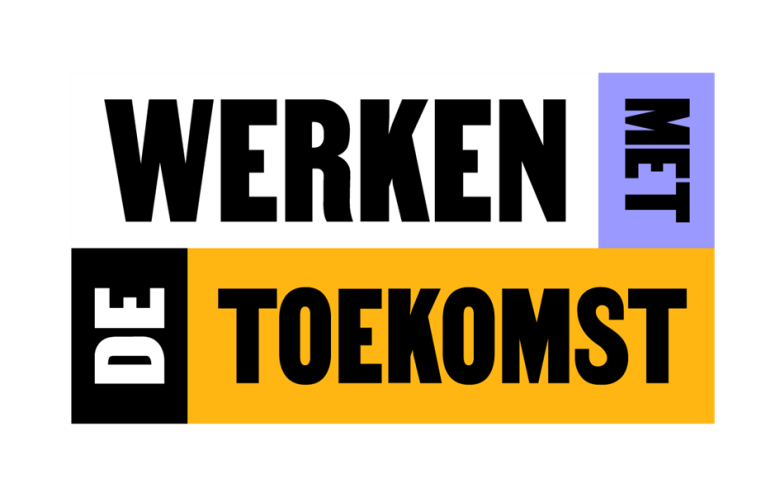Introduction:
Romania is the perfect land of contrasts and paradoxes: the country of Constantin Brancusi, Eugene Ionesco, Emil Cioran, Mircea Eliade, and Nadia Comaneci, but also of Dracula and Nicolae Ceausescu. The Old World of Romania is a vast museum of ancient heritage and still alive even if only through its famous painted churches and monasteries, its folk art, or its feudal castles in the Carpathian Mountains. The New World may be embodied by the Parliament Palace and the subway network in Bucharest, or by the Western styles of life adopted by Romania's townsfolk.
Romania lies in South-Eastern Europe. Its neighbours are Bulgaria (South), Yugoslavia (South-West), Hungary (North-West), Ukraine (North), Moldavia (East), the Black Sea (East). The area of Romania is 91,699 sq. miles (237,500 sq. km and its population, according to the 1992 census, is 22,788,993, mainly Romanian, alongside Hungarian, German and Gypsy minorities. About 55% of Romania's inhabitants live in urban areas, and the rest in rural areas.
Romanian is a Romance language with some archaic forms and with admixtures of Slavonic, Turkish, French and Magyar words. There is a wealth of folk tales, legends, poetry, music and dance passed on through the centuries. The main religion is the Romanian Greek Orthodoxism (86.9%). The other significant denominations in Romania are: Roman Catholicism (5%), Lutheranism, Calvinism (3.5%), Greek-Catholicism (1%), Pentecostalism (1%), Baptism (0.5%), Islamism (0.24%) and Judaism (0.04%).
Romania is a Republic as a form of government. Romania’s capital city is Bucharest, with an area of 1,521 sq. km and a population of 2,351,000 inhabitants. The Romanian currency is Leu. The Romanian flag has three vertical bands – red, yellow and blue. The National Day is December 1 – in memory of the Romanians’ Great Union (December 1, 1918).
Romanian History:
Aiming to reveal the part played by the Romanians and their ancestors in world history, this work sets forth, in a very brief and accessible manner, the most significant events and salient people who have made up the Romanian saga from its beginnings to the day.
The writing is easy to read by all those who have an interest in South Eastern Europe, who are curious to learn more about Romania's origins and past, and want to become acquainted with its people and traditions beyond and against set opinions and poor cliché images of the Dracula's or Ceausescu's kind.
The communist rule kept Romania isolated from the Western world for almost half a century, which made it difficult for her or almost denied her free access to the flow of knowledge and information, to the Western standards and systems of values.
The present mini-guide is intended to fill in the gap of information and highlight the Romanian experience from the historian's viewpoint, which may reassert the European vocation of this country.
Early History:
Archaeological findings trace the very early history of habitation on Romanian territory to some one or two million years ago (Valea Dîrjovului, Bugiulesti, the area of rivers Olt and Oltetz in Oltenia). The process of anthropogenesis occurred in the area encompassed by the Wooded Carpathians, the Danube, and the Black Sea.
Vestiges of Neolithic cultures (Boian-Gumelnita in the Romanian Plain and the Dobrudja, Cucuteni-Ariusd in Moldavia and Eastern Transylvania, and Turdas-Petresti in Transylvania, Banat and Oltenia) have one element in common, namely, a polychrome pottery of exquisite beauty and remarkable technical achievement
The orginate of the Netherlands:
The history of your fatherland not knowing,
zijt gij buitenstaat ever a good citizen,
much minus useful a regent of itself become
How old is the Netherlands?
Since when has existed the Netherlands? That question is not answer this way simply. There already complete long people on the territory of the current Netherlands live, but for a long time you can them call no Dutch. (cards).
The British historian Jonathan Israel starts its book concerning the history of the Netherlands in 1477. That was the year in which a number of districts of the Burgundian realm came in insurrection against the Burgundian central authority. Tijdnes this insurrection enforced they on 14 March 1477 the large privilege. This kept o.a. in that the regional states could come without authorisation of the Burgundian governing board and that Dutch in the Netherlands and sea country the official governing board language became.
The beginning of the Netherlands lies therefore actual in France, for exact to be in Burgundy, at Filips naughty. In the course of a couple centuries inherited, and conquered he and are heirs bought a large area.
History of Indo-Europees to Dutch:
There is already long spoken terribly on ground: about 40,000 years. At unearthings discovered one that our ancestors communicated already. However language still no such as we had these oermensen that now know...
The beginning of the Dutch language linguists are situated around 700 after christus. What kind of that time comes, to call we the voorgeschiedenis. In that period Dutch have broken away from themselves of the other West-Germaanse languages: English, Fries and German. With Noord-Germaanse the languages (Swedish, Danish and Norwegian), and Oost-Germaanse the languages (of which we only Gothic knowing) descended that of a common oertaal: Proto-Germaans or Oergermaans. We Indo-European or Indo-Europees call that oertaal. Indo-Europese the language family is largest in the world. Toch it is improbable that that language was ever spoken from India to Ireland. But we have kept hundreds of words from.
Gothic represent the some handed over form of Oost-Germaanse the language. Gothic an important source for the reconstructie of former Gemeen-Germaanse the language phase is, from which has originated finally also Dutch. For this reason it is very important also for the history and the development of Dutch.
The mother of the Dutch language is it diets. Of this its ‘Deutsch’ and ‘Dutch’ inferred diets mean: ‘of the diet, of the people. It is the language such as the people speaks.
Religion Romania:
The Rumanians are the only Romanesque people which is not catholic but orthodoxe.
As from the 3e centuries the area was converted at north of the Donau by Latin and Byzantine missionaries. In the middle ages names the orthodoxe Rumanian Christians the Slavonian ritus concerning and church-Slavonian was age-long the liturgical language. At a later stage this Nieuw-Grieks became and still later eventually Rumanian. In 1864, succeeded it Roemeens-orthodoxe the church loose to make oneself of the patriarchate of Constantinopel and became independent.
The freedom of religion has been guaranteed in the new constitution of 1991. The proportion between the church and the state became already in 1948, regular where o.a. the salaries of ecclesiastical officials were paid partially by the state. Under the Communists Roemeens-orthodoxe were permitted the church but its property was all confiscated in 1974. Furthermore much Roman Catholic priests and bishops were deported and Grieks-katholieke the belief outside the law were put. Much ecclesiastical gezagsdragers were even secret agents and played on biechtgeheimen to the hated security service Securitate. The head of Roemeens-orthodoxe the church in that time, patriarch Teoctist, for this reason resigned in January 1990. Its opvolging was however such a problem that he already in April the control of the church in itself took. A real renewal of Roemeens-orthodoxe the church stayed away as a result. Since 1990 the church has been disconnected of the state and had become for example Grieks-katholieke the church legal.
Romania counts no less than sixteen large and small communion. The mutual relations run not always even smoothly and a oecumene it has not reached still. Approx.. 70% of the population belong to Roemeens-orthodoxe the church and approximately 6% of the population are Roman Catholic (uniaten) or Grieks-katholiek. Smaller movements are the evangelical church of the Augsburgse confessie or Lutheran church, reformed (calvinistic) the church, the Synodale presbyterianen, Unitarische (antitrinitaristische) the church, the pinkstergemeente, the gospel Christians and the old rite-Christian church. Furthermore Romania has still a small number of orthodoxe armeniërs, Jews and islamieten. Most of Islamic the moskeeën are find in the Dobroedsja with Turkish communities in Constan?a and Mangalia.
The highest authority body of Roemeens-orthodoxe the church are the saint synod, those 33 bishops count and as from 1925 his own patriarchate has. Roemeens-orthodoxe the church counts twenty theological seminars, where more than 4000 students study.
Reformed the church is the largest Protestant belief community in Romania and its members are mainly of hongaarse source. Reformed the church was abroad especially confessed by the activities of dominee László Tökes in 1989. He was forced transferred to another church municipality, what run-up formed Ceausescu to the fall of dictator.
The Jewish community has been since the arrival of the communist bewind in 1948, with approx.. 400,000 persons shrunk, much Rumanian Jews emigrated to Israel. At this moment live there official still but approx.. 10,000 Jews in Romania. As well as at the gypsies the number lies probably much higher, perhaps approx.. 20.000.
Religion The Netherlands:
Freedom of religion has been set out in the constitution of 1848. According to estimates of the central office for statistics (1997) 40% of the population support no religion. Of the gelovigen the catholics form numerically the strongest grouping: 31% of the population; Dutch reformed then 14% counted, the members of the gereformeerde churches in the Netherlands 7%. Old-Catholic the church arose in the Netherlands as a response to the concentration of the power in the Roman Catholic church at the pope.With the election of its own bishop by the chapter in Utrecht in 1723, the crack with Rome became definite. After the first Vaticaans the infallibility of the pope had declared council in 1870, found oud-katholieken and like-minded groups in other countries each other in 1889, in the Union of Utrecht. Oud-Katholieke the church in the Netherlands counts approximately 8000 members in 26 parishes. Worldwide there are approximately 500,000 oud-katholieken. In 2000, the Antwerp theoloog and pastoor j became. Vercammen chosen to head of Oud-Katholieke the church in the Netherlands.
The contemporary development of the religion moves himself in the direction of onkerkelijkheid. For the years fifty the influence of the church has decreased strongly in the Netherlands.
The arrival for the years sixty of Moroccan and Turkish employees has had the establishment from the Islam (4.2% of the total population in 1997). Moreover there Hindus (0,5%) and Buddhists in the Netherlands live.








REACTIES
1 seconde geleden